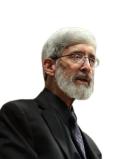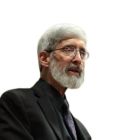Race and Ethnicity
Police Use of Force and Race: Realities and Solutions
It begins with a willingness to face facts and respect experiences.
Posted October 20, 2023 Reviewed by Devon Frye

One of my professional activities involves testifying as an expert witness about the psychology and neuroscience of emergency responding in cases where officers have been accused of excessive or illegal use of force.
The overwhelming majority of cases where police use force are deemed justified, but in many of the high-profile contested cases that come to media attention, accusations or implications of racial bias are inextricably entwined. I’m not going to cover this whole topic.
Still, I want to present some bullet points about policing, race, and the use of force, particularly deadly force, gleaned from a study of the existing literature in this area and my decades of clinical and forensic experience.
First, respect people’s perceptions, even if you question their interpretations. Black citizens often experience themselves as unequally and unfairly targeted by police use of force and in other ways as well. Police officers often experience interactions with Black citizens as more potentially dangerous than with other citizens, sometimes requiring an elevated level of threat vigilance and, consequently, the greater possibility of a forceful response.
Want the bad news? Both groups may be right. Research from the U.S. Department of Justice shows that if you are a young Black male, you are proportionately more likely than any other demographic group member to be killed by a police officer. And if you are a police officer, you are proportionately more likely to be killed by a young Black male than any other demographic group member. If these statistics bear out, let’s take a breath and find out why.
Second, don’t jump to conclusions, but follow the science. Factoring out race, the second most likely group to kill police or be killed by them is comprised of young White males. Age and testosterone account for a major part of the equation in a police-citizen deadly force encounter. Young White females, older White males, and females of any race are far behind as either slayers or the slain. This reduces, but does not eliminate, a significant racial component.
Third, while you can’t control age and sex, you can influence behavior. Most uses of force and deadly force encounters do not erupt de novo but evolve in a lethally escalating dance of vicious cycles and tipping points.
Officers confront a suspicious citizen. A verbal encounter ensues. The citizen feels unfairly singled out and reacts. Officers react to the reaction. Nobody backs down, cools down, or tries to calm down the situation, or such attempts fail with a citizen who is intoxicated, mentally ill, confused, or enraged or with officers who are irritated, exhausted, caught by surprise, or inadequately trained. The citizen continues to resist an officer’s commands, a knee or elbow jerks here or there, the citizen is perceived to make a threatening move with a weapon or dangerous object, and the flashover into a deadly force encounter costs someone their life.
In retrospect, some of these tragic outcomes might have been averted, while others seem to have been a foregone conclusion. But none of these outcomes is predetermined; they only highlight the need for better training in safe, strategic de-escalation strategies and, possibly, systemic changes within the policies of particular police agencies.
Fourth, in a life-and-death emergency, the brain magnifies the threat perception. Officers who have been involved in uncontested deadly force encounters—i.e., those that have been administratively cleared and ruled justified—commonly report a range of perceptual and cognitive distortions at the scene that made the suspect appear closer, bigger, faster, and more menacing than is later judged to be the case based on witness accounts or video recordings. When a use-of-force encounter is contested, this post-hoc analysis may be used as “evidence” that the officer acted negligently or maliciously when responding to the threat as it was perceived.
Fifth, in surveys and post-shooting clinical interviews, many officers report restraining their use of deadly force, even when it would have been legally justified. Sometimes, this is for purely tactical reasons, e.g., not to endanger innocent citizens or other officers, and other times precisely out of concern about later accusations of excessive force or racial bias.
Studies that measure electrophysiological brain responses to threatening stimuli in simulated shooting scenarios have found that neural systems involved in response inhibition are more strongly activated by experimentally presented images of Black citizens holding a weapon than white citizens. This implies that the study subjects are hesitating longer before firing at the Black photos, as if their brains are struggling with whether to take the simulated shot. In clinical interviews with officers, a fair number of them have reported similar feelings of hesitation in these circumstances.
Sixth, yes, there are some bad cops, cruel cops, and racist cops. Although they comprise a minority of police officers, every law enforcement agency owes it to the public they serve, not to mention their credibility and safety, to identify and assertively deal with those officers who willfully or negligently abuse their authority. Police and community members should be collaborators, not adversaries, in this endeavor. Displaced citizen anger should not be used as a pretext for condemning all officers for doing their jobs, and collegial, blue-wall police solidarity should not be an excuse for shielding truly bad actors.
Seventh, no, it’s not hopeless, and those who throw up their hands, sputter, and tweet about the inevitability of injustice in our racially polarized society are just lazy or self-serving. Research and experience show that force and other unnecessarily contentious police-citizen encounters can be controlled with proper training, education, and community engagement.
One of the worst things we can do is to buy into the political and media-fueled toxic mythology that two monolithic entities—the police and Black people, or other people of color—are somehow natural enemies, like a cobra and a mongoose. Human nature can be changed by human intelligence; we do it in technology and medicine, and we can do it in psychology and social relations.
It's time for all of us to grow up and speak frankly, so hold the Kumbaya soundtrack. Sure, there is racism in law enforcement because there is racism in American society, tribalism in our human evolutionary genome, and all the training in the world won’t change a person’s personality or DNA. But most citizens do want to feel they can rely on the police to protect them, and most police do take this responsibility seriously.
Improvement will take time, effort, and commitment. However, any treatment will fail if the problem is misdiagnosed. So effective action will require acknowledging people’s reality, even if you disagree with the causes.
Start with respect. This means listening before you argue. It means doing the hard work of thinking through and articulating your point. Do you think I couldn’t understand? Help me understand. Make me understand.
It also means knowing when to stop talking and take concrete, assertive steps to deal with deliberate troublemakers. All this goes for both sides—and if we can do that, person by person, street by street, community by community, maybe some of these lessons will rub off on wider dimensions of the uneasy world we live in.
Note: Information provided herein is for educational purposes and is not intended to provide individual clinical or forensic advice or opinions. Always consult with a qualified legal, medical, or mental health professional for such cases.
References
Miller, L. (2020). The Psychology of Police Deadly Force Encounters: Science, Practice, and Policy. Charles C Thomas.
Gross, N. (2023). Walk the Walk: How Three Police Chiefs Defied the Odds and Changed Cop Culture. Metropolitan Books.




